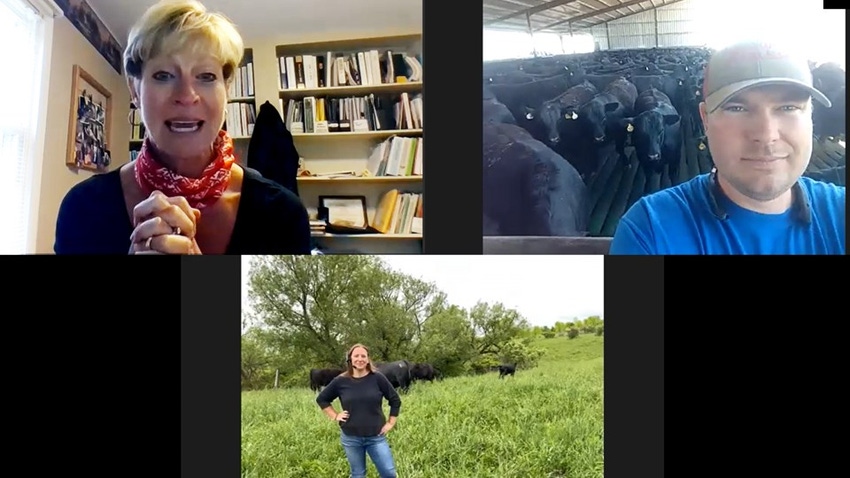Iowa, New York beef groups partner on virtual tour
Attendees learned about beef cattle life cycle from birth to finish as well as management practices.
July 8, 2020

The Iowa Beef Industry Council and the New York Beef Council (NYBC) partnered on a live-streamed virtual farm tour connecting consumers to a New York cow/calf operation and an Iowa feedlot. The 50-minute-long Facebook Live Stream introduced attendees to Betsy Hicks of Maple Acres Farm located in McGraw, N.Y., before virtually traveling to Nate Graham’s finishing lot in Cherokee County, Iowa.
The virtual tours included an overview of the beef cattle life cycle, including an up-close look at cow/calf pairs. The tour also introduced attendees to what cattle eat and how farmers manage their land through rotational grazing. Additional topics discussed were animal care, cattle identification, recordkeeping and herd health management.
Graham Feedlots, a fourth-generation family farm, produces its own feed for its cattle, which was highlighted throughout the tour.
Due to COVID-19, the trip was streamed live across Facebook and on the NYBC website to allow students, as well as any interested consumers, to learn virtually. The trip, hosted in June, has reached more than 11,000 people.
The trip provides attendees with an especially unique opportunity to follow the beef animal's life cycle from birth to finish.
While New York has a population of more than 19.6 million consumers and is home to more than 628,000 dairy cows, beef production in the state primarily focuses on the cow/calf segment of direct-to-consumer marketing. There are only 7,300 beef farms in New York.
In contrast, Iowa is home to more cattle than people, with approximately 3.9 million head of cattle in the state. Beef production in Iowa widely focuses on the finishing phase utilizing the primary cropland and corn production in the region.
“Iowa has a unique opportunity with its state-to-state partnerships. Collectively, Iowa consumers are more directly connected to agriculture than consumers of some other states and have a positive perception of the beef industry overall,” Nate Graham said. “Therefore, the ability to offer resources to areas where consumer populations are higher with a greater disconnect to where their food comes from has become increasingly important in recent years.”
You May Also Like



